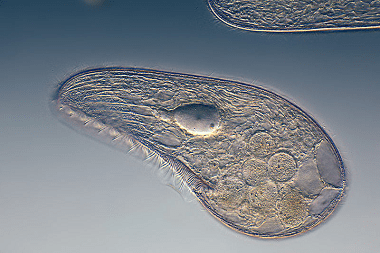Parasitic diseases >>>> Microsporidia - why are they dangerous?
Microsporidia - why are they dangerous?

Microsporidia are the simplest organisms - parasites that can penetrate into any living organisms of any level of development. Microsporidia are an extremely numerous species of protozoa, there are about 1200 variations, which are divided by genera. Only a few species of this parasite can infect a person.
A feature of microsporidia is the fact that, when they enter the body of a living being, they pierce the cell membrane and throw in spores. Outside a living organism, microsporidia do not survive, but they are able to easily move by air - dust or droplets from one organism to another.
Microsporidia affect cells of various organs:
- digestive tract,
- mucous membranes of the mouth, nose and eyes,
- Airways,
- kidneys, liver, heart, muscle tissue.
There are known cases of seeding the whole organism up to the central nervous system.
But it is not easy to suspect microsporidiosis, since it can be asymptomatic or with symptoms similar to digestive disorders or respiratory diseases.
With signs typical of microsporidiosis, such as:
- diarrhea,
- cough of unknown etiology,
- persistent conjunctivitis,
it is worth taking tests for the presumptive presence of microsporidia in the body.
It is not difficult to diagnose microsporidiosis. For this, smears of mucous membranes, feces, urine sediment, washings from the mucous membrane of the eyes, scrapings from the walls of the bladder are taken.
By itself, microsporidiosis is not dangerous for a healthy body, but in people with congenital or acquired immunodeficiency, microsporidiosis can cause quite significant ailments.

Read

Read



























